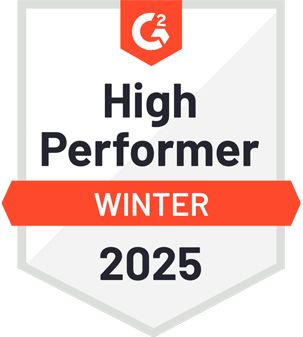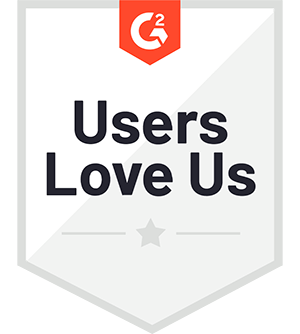Key Takeaways
- A time series database must support high-throughput ingestion and low-latency queries to handle mission-critical applications
- Combining live streaming data with historical context enables better decision-making across industries.
- Columnar storage, compression techniques, and retention policies help manage massive datasets while optimizing costs and performance.
- Look for databases that integrate seamlessly with popular programming languages and existing infrastructure.
- A robust database must ensure data traceability, security, and regulatory compliance across industries like finance and defense.
In this blog, we explore the key considerations you should take when choosing a time series database that can handle the volume, variety, and velocity of the toughest data management environments.
Data is often compared to oil because it’s such a valuable resource, but sometimes it has more in common with a different type of energy—sunlight.
Rather than pouring into static silos to be harnessed, more and more data is being constantly synthesized over time. From 58,200 listed company tickers, to 18.8 billion IoT devices, constant connectivity is now generating a staggering volume of timestamped data points.
Making more informed decisions by understanding the patterns and connections in such time series data is now mission-critical in many sectors. From better trade execution in capital markets, to predictive equipment maintenance in manufacturing, the ability to effectively store, retrieve, manage and analyze timestamped data makes a significant competitive impact.
What to look for when choosing a time series database
Unlocking the greatest benefits from time series data starts with choosing the right database. Read on to discover the seven crucial qualities to look for when choosing a time series database and how they can help you unleash a new level of competitive advantage.
1. Performance and scalability are crucial in time series databases
Amid today’s data tsunami, your time series database must offer high-throughput ingestion and low latency querying to support mission-critical applications. For example, database performance is vital in capital markets, where ingest rates of 100,000 ticks per second are common and algorithmic trading decisions may need to be made in just single-digit milliseconds for optimal outcomes. A good example is the area of risk management, where time series databases can support Value-at-Risk modeling to monitor and limit potential losses in real time.
Performance is also inherently connected with scalability, so look for databases that can seamlessly add resources as user demands and data volumes rise. By scaling up compute and storage as required—often by leveraging cloud-based resources—time series databases can maintain their ability to deliver fast, accurate results. This is key in industries like aerospace and defense, where more and more connected devices and sensors are creating ever larger datasets. For instance, just consider the rising number of military drones, which is expected to double to 52,000 by 2028.
2. Your time series database needs to handle real-time and historical data
Time-based indexing that enables fast access to historical and real-time data is also vital to make more informed decisions. Over 70% of Wall Street firms now use time series databases that can blend streaming high-frequency information feeds with historical context to harness granular insights into market behavior and trends over time. This enables firms to react faster to risks or opportunities as they appear, while also strengthening their ability to generate, backtest and refine long-term trading strategies.
Similarly, manufacturers use time series databases to not only monitor and optimize current production, but also to enable predictive maintenance. The ability to query data collected over time from temperature, pressure or vibration sensors enables companies to predict equipment failures. This allows for proactive servicing that creates minimal disruption and extends the lifetime of machinery.
3. In-memory processing and low latency responses for time-series analysis
When it comes to effectively harnessing timestamped data, time to insight is everything. Choosing a time series database that leverage high-performance computing capabilities like parallel processing, in-memory computing, and micro-batching techniques enables low-latency response times and unlocks insights from streaming data at speed.
For example, in capital markets, a benchmark-tracking VWAP must instantly recalibrate trading profiles based on each successive tick, while still incorporating historical prices for context. That leaves no room for the inherent latency of traditional databases.
4. Data retention and compression capabilities
Time series datasets can be enormous and grow fast, so it’s vital to select a database that supports efficient long-term storage. You should be able to apply data retention policies and compression techniques to keep storage costs under control while still enabling rapid querying and analysis of high-fidelity historical data.
Look for columnar time series databases that make storage and retrieval more efficient, enabling faster scanning, aggregation and filtering operations. Your chosen database should be able to apply run-length, delta or dictionary encoding techniques to compress the size of stored data without losing granular information or slowing down performance.
Similarly, a time series database should also be able to implement retention policies that further optimize data storage. These policies might include storing fewer details for older time periods to control data volumes without losing overall trends (i.e. downsampling), or automatically removing or archiving data after a specific period.
5. Programming and infrastructure flexibility
While a productive and expressive programming language is essential to make the most of time series data, getting to grips with a new software toolkit can be a slow process. Instead, seek out time series databases that offer interoperability with popular options like Python and SQL, as well as intuitive APIs, clear documentation and strong tooling.
A more versatile platform accelerates your ability to develop analytics solutions, driving faster innovation, less friction and higher application performance. Conversely, beware platforms that promise a ready-to-use data model, but don’t allow for easy analytics prototyping and testing. This is especially true if your organization already has a well-developed data science infrastructure and is familiar with the rich programming libraries of languages like Python.
Equally, look for hardware-agnostic platforms that can rapidly integrate with your existing infrastructure environment, whether you use an on-premises, cloud or hybrid model.
6. Efficient cost of ownership
As with any infrastructure investment, it’s vital to consider total cost of ownership when choosing a time series database. Top performance comes at a price, so you must balance ongoing costs against your operational needs and required tooling. Beware solutions that offer low deployment costs but that are more expensive to manage, maintain and scale. Some aspects to look for include:
- The ability to manage and analyze large datasets on a small hardware footprint
- Proven performance via independent industry organizations like the STAC Benchmark Council
- Rapid scalability and efficient long-term data storage
- Adaptability and ease-of-use, enabling developers to rapidly prototype and test analytics
- Flexible integration with new technologies as they appear
- Low ongoing maintenance and support requirements
7. Excellent security and compliance
With varied industries facing tough regulatory scrutiny, it’s critical to look for a time series database that supports top-notch information governance. To prevent fines or reputational damage, your data needs to remain accessible, traceable and auditable at all times. This is particularly important when setting data retention policies that comply with regulations like MiFID II in the EU or the Dodd-Frank Act in the US.
Information security is also a key concern, especially for the defense industry which not only deploys mission-critical applications, but also faces cyber threats from state-backed actors. As such, look for database solutions that are proven, resilient and secure by design.
The clock is ticking: The time-series database market is growing
As we speak, more and more companies are leveraging the advantages of timestamped data. In fact, the global time series database market is expected to grow at 10.4% per year from 2024 to 2033.
While there are many options to consider when choosing a time series database, few can handle the data volumes and high-speed analytics required by the most demanding industries. Whether you’re executing high-frequency algorithmic trading or interpreting surveillance data for battlefield intelligence, running complex analytics on vast datasets in real-time demands a fast, efficient and scalable solution.
Introducing kdb+: The world’s fastest time-series database
kdb+, our leading time series database, is independently benchmarked as the fastest in the world. With its columnar design, in-memory architecture, parallel processing and multithreaded data loading capabilities, kdb+ ensures high-speed data ingestion, efficient storage, and fast analytics on massive datasets. Key capabilities include:
- Support for both time series and relational datasets, enabling joins and analysis across time series, referential and meta data
- A concise, expressive and highly efficient programming language, q, designed specifically for handling time series data, as well as support for popular languages like Python and SQL
- Easy deployment on the cloud, at the edge or on-premises. Full support for Docker and Kubernetes for effortless scaling and integration
- A simple API for easy connectivity to external graphical, reporting and legacy systems
It’s time to harness time series data for deeper insights, data-driven decisions and a sharper competitive edge. Read our ebook, Introduction to time series databases for more information on how to choose a database built for speed, scale, and efficiency, that enables real-time, data-driven decisions.
Learn more about the purpose-built capabilities of kdb+, or book a demo now to see why it stands out from the crowd.









